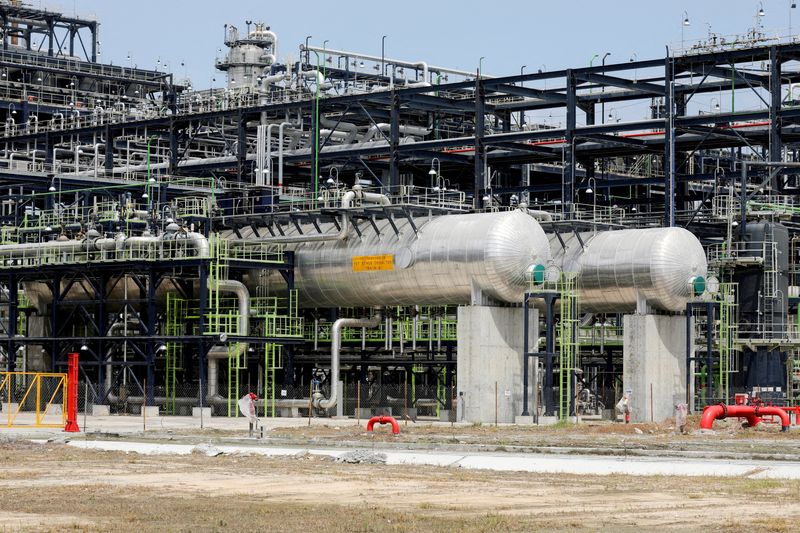By Robert Harvey
LONDON (Reuters) -Oil prices were stable on Wednesday, as investors mulled supply risks stemming from ongoing Ukrainian attacks on Russian refineries and the potential for a widening of the Middle East conflict.
futures for June rose 16 cents, or 0.18%, to $89.08 per barrel at 0902 GMT, while U.S. West Texas Intermediate crude futures for May gained 11 cents, or 0.13%, to $85.26 a barrel.
Both Brent and WTI climbed 1.7% during the previous session to their highest since October.
“The rise in hostilities in both hotspots pushed the price of the two futures contracts to their highest levels this year,” PVM analyst Tamas Varga said of Tuesday’s rise.
Prices jumped higher on Tuesday after a fresh round of Ukrainian drone attacks on Russian refineries threatened to take even more of the country’s processing capacity offline.
Investors were also concerned that conflict in the Middle East could spread, after Iran vowed revenge against Israel for an attack on Monday that killed high-ranking military personnel.
A wider conflict in the Middle East involving more oil-producing nations could cause supply disruptions. Iran, which provides support for the Hamas militia fighting Israel in Gaza, is the third-largest producer in the Organization of the Petroleum Exporting Countries (OPEC).
Adding to the supply worries, Mexico’s state energy company Pemex requested its trading unit to cancel up to 436,000 barrels per day of crude exports this month as it gets ready to process domestic oil at the new Dos Bocas refinery, an internal document reviewed by Reuters showed.
On Wednesday, Taiwan’s strongest earthquake in at least 25 years briefly caused Formosa Petrochemical to halt operations at its Mailiao refinery as a precautionary measure, but works have since restarted.

Investors will be looking ahead to an OPEC+ ministerial panel at 1100 GMT, which is unlikely to recommend any oil output policy changes according to three sources, having already decided to extend current cuts until June.
The U.S. Energy Information Administration (EIA) will also release oil inventory data later on Wednesday. Data from the American Petroleum Institute reported crude inventories fell by 2.3 million barrels last week, traders said on Tuesday.

